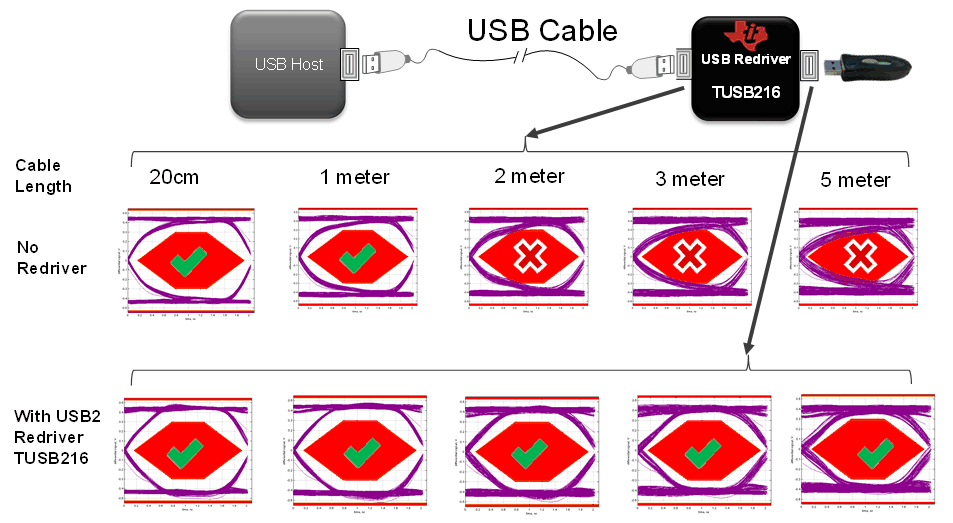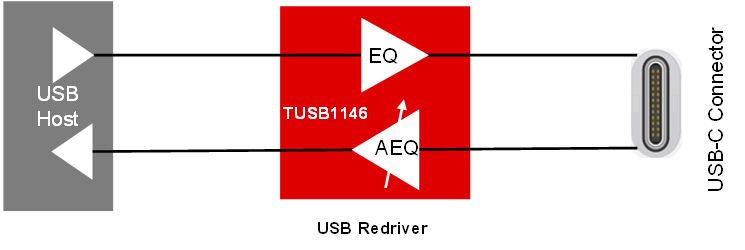SNLA388 June 2021 DS160PR410
2.1 USB Interface
USB is a ubiquitous interface that is found in almost all electronic gadgets. To provide easy user interface options for operators in industrial applications, USB is widely used. The interface is also used for expanding the functionality of the equipment through connecting external devices into the system. Depending on the data bandwidth needs of the intended function, either USB2, USB3 or USB Type-C can be used for industrial communications.
USB2 interface has widespread use for user interface and is typically used for management or control interface in industrial applications. The USB2 can support up to 480Mbps speed. Even though when compared with other Gigabit interfaces, USB2 is considered a relatively low speed interface, USB2 has a very stringent compliance standard that is difficult to meet without violating the eye mask at the connector. Adding a redriver to a USB2 data path design can easily solve these challenges.
Figure 2-3 demonstrates the signal integrity of a USB2 data path both with and without a USB2 redriver. Without a redriver, the USB2 signal can only pass compliance with a 1-meter cable. Adding a USB2 redriver such as TUSB216 to the system, it is able to pass compliance with up to 5-meters of cable in this specific link example.
 Figure 2-3 Using USB2 Redriver to Pass
Compliance
Figure 2-3 Using USB2 Redriver to Pass
ComplianceUSB3 and USB Type-C can support 5Gbps, 10Gbps and even 20Gbps data rates. These high speed interfaces are typically used when video or other high bandwidth data need to be sent across USB interface. In an industrial PC system, the distance between the USB host and the USB connector is fixed, the channel loss profile can be predetermined, and a redriver with a fixed equalization (FEQ) can work to compensate for the egress data path loss of the link. However, on the host ingress path, since the signal loss from the connector is dependent on what device and cable the remote side is connected to, it is beneficial to have adaptive equalization (AEQ) to compensate variety of channel loss profile as illustrated in Figure 2-4. Adaptive EQ offers the capability to adjust a receiver’s EQ setting based on the quality of the incoming signal. For example, if a USB device is plugged directly into a USB receptacle without a cable, the redriver’s AEQ algorithm will select a lower EQ setting than it would if the USB device was plugged into receptacle through a cable. Adaptive EQ enables the redriver to be more intelligent and provide best signal quality at its output while saving design effort on device tuning.
 Figure 2-4 USB3 and Type-C Redriver with
Adaptive EQ
Figure 2-4 USB3 and Type-C Redriver with
Adaptive EQ